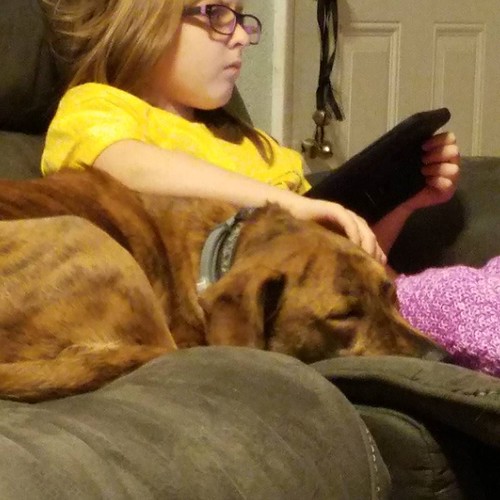To take a look at if Car8 can inhibit ITPR1 phosphorylation in DRG of MT mice, viral particles of AAV8-V5-Car8WT, AAV8-V5-Car8MT and AAV2-eGFP had been used making use of SN injections to express V5-Car8WT (S2A Fig.) and V5-Car8MT (S2C Fig.) proteins in lumbar DRG. SN injections of AAV8-V5-Car8WT inhibited ITPR1 phosphorylation in DRG neurons from MT mice (S2Aç½, E Fig.) but AAV8-V5-Car8MT (S2C Fig.) and AAV2-eGFP (data not shown) did not change pITPR1 ranges from baseline in spite of equivalent mRNA expression at day thirty soon after injection (S3 Fig.). Our information DEL-22379 chemical information display that AAV8-V5-Car8WT overexpression inhibits DRG ITPR1 phosphorylation in MT mice. We have determined the dimension distribution (m2) of V5-positive cells in relation to the overall V5-positive mobile populace. V5-positive cells represented 82.one% of cells and these corresponded to mostly little to medium-sized neurons (700 m2), suggesting AAV8-V5-Car8 tropism for neurons probably to be associated in nociceptive signaling (Fig. 2E). Immunohistochemistry was subsequent executed to corroborate these findings and even more characterize AAV8V5-Car8 tropism for putative nociceptive neurons. Lumbar DRG sections had been labeled with antibodies against markers of numerous neuronal populations and assessed for co-localization with V5 (S4 Fig.). The percentage of V5-good cells that co-localized with calcitonin gene-associated peptide (CGRP, S4A Fig.), material P (SP, S4E Fig.), or with Isolectin B4 (IB4, S4I Fig.), have been sixty two%, 41% and 23%, respectively. As glial cells perform a extremely crucial role in the mediation of long-term ache [seventy three], we examined whether sciatic nerve shipping and delivery resulted in transduction  of satellite cells in the DRG and SN. We identified the V5 marker was co-localized with S100 in satellite cells (S4M Fig., S5E Fig.). The sample of V5 visualization inside of the spinal cord (SC) recapitulated this transduction of putative nociceptive neurons. Cross sections of the lumbar spinal cord were used in this study. V5-immunoreactive fibers ended up located mainly inside of the superficial lamina I and II of the dorsal horn (DH) following sciatic nerve injections, and co-localized with the neuronal marker Tuj1 (S5A Fig.). Abundant staining for V5-good fibers were also observed in sciatic nerve (S5E Fig.). Collectively, our data show robust expression of V5-Car8WT protein in nociceptive neurons right after gene transfer and that overexpression of Car8 inhibits pITPR1 and presumably cytosolic free of charge calcium release in DRG of MT mice, as suggested by our in vitro information (Fig. 3).
of satellite cells in the DRG and SN. We identified the V5 marker was co-localized with S100 in satellite cells (S4M Fig., S5E Fig.). The sample of V5 visualization inside of the spinal cord (SC) recapitulated this transduction of putative nociceptive neurons. Cross sections of the lumbar spinal cord were used in this study. V5-immunoreactive fibers ended up located mainly inside of the superficial lamina I and II of the dorsal horn (DH) following sciatic nerve injections, and co-localized with the neuronal marker Tuj1 (S5A Fig.). Abundant staining for V5-good fibers were also observed in sciatic nerve (S5E Fig.). Collectively, our data show robust expression of V5-Car8WT protein in nociceptive neurons right after gene transfer and that overexpression of Car8 inhibits pITPR1 and presumably cytosolic free of charge calcium release in DRG of MT mice, as suggested by our in vitro information (Fig. 3).
Gene transfer of V5-Car8WT regulates nociception and produces analgesia23394126 in MT mice. Sciatic nerve injections of AAV8-V5-Car8WT virus (1.5l, one.29E+14 genome copies /mL) and AAV8-V5-Car8MT virus (1.5l, one.61E+fourteen genome copies /mL) had been employed in MT mice. (7A) The “up-down” strategy (see Techniques for information) was utilized to evaluate mechanical responses by probing the plantar aspect of the hindpaw with von Frey filaments and figuring out the paw withdrawal threshold (grams). (7B) Thermal withdrawal response latencies were measured to radiant heat (70 units) used to the plantar element of the hind paw (seconds). AAV8-V5-Car8WT improved equally basal mechanical thresholds (Fig. 7A) and thermal latencies (Fig. 7B), commencing on working day 7 following injection and long lasting a lot more than 28 times.
We have formerly revealed that SN injections of AAV8-V5-Car8WT overexpressed V5-Car8WT protein and inhibited ITPR1 activation in DRG neurons from MT mice (S2A, E Fig.). We up coming analyzed if this complementation experiment utilizing SN gene transfer was required and ample to correct baseline mechanical and thermal soreness connected behaviors in MT mice. We discovered that mechanical withdrawal threshold and thermal withdrawal latencies had been considerably enhanced approximately 5 and 7 times following sciatic nerve injection with AAV8-V5-Car8WT, and the effect lasted much more than 28 days (Fig. 7A-B).